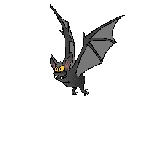
"If I could
hide inside this cave,
What wondrous sights I'd see;
Brown bats all hanging upside down
Like dark leaves on a tree.
Their mouths wide open as they fly,
Shouting sounds as they go by;
The echoes bounce off rocks and things.
To help them steer their hunter's wings."
MoeTronix world headquarters was recently invaded by a colony of bats that found an opening above a window and turned the space into their living quarters. The unwanted guests need to be removed but I thought I'd take the unique opportunity to examine their sonar signatures before sending them to a new home.
The RFSPACE SDR-IQ receiver easily receives into the audio range so was chosen to digitize the chirps of the bats. A transducer was needed and I decided to try a horn tweeter used in an audio speaker system. Its low impedance would be a better match to the 50 Ohm SDR-IQ than one of the high impedance ultrasonic transducers such as used in the old polaroid cameras.
An observatory was set up under the infested window with a wireless camera with infrared lighting and the tweeter horn driver.
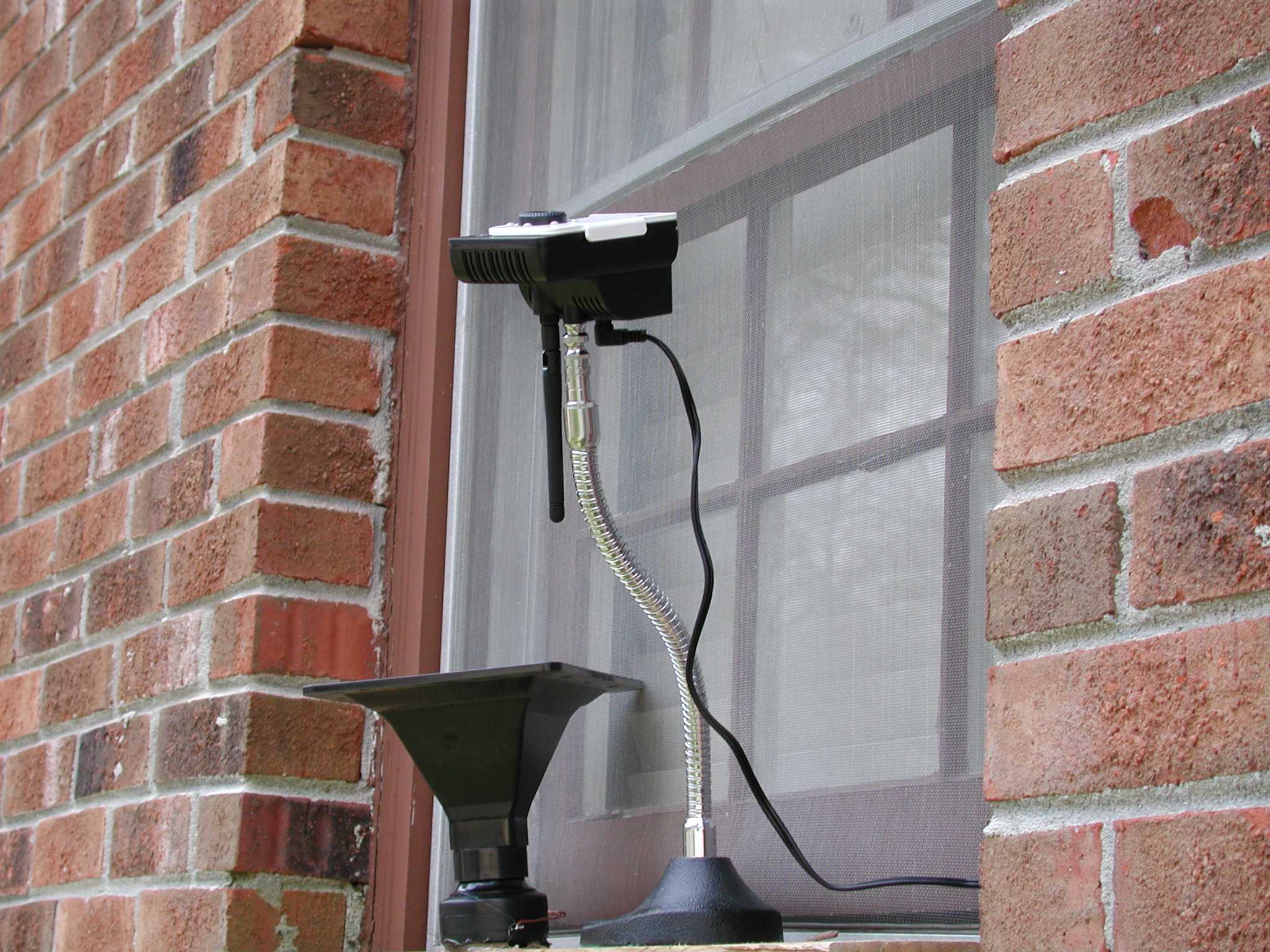
Inside was just the SDR-IQ and SpectraVue running on a PC to record and display the results. SpectraVue was setup in 50KHz wide mode with a center frequency of 25KHz so the display went from 0 to 50KHz. Wideband Upper sideband was selected for demodulation of the ultrasonic chirps. (guess the bats do not obey the LSB rule for the lower bands) Using USB just shifts the ultrasonic band down into the audible range so you can hear the chirps.
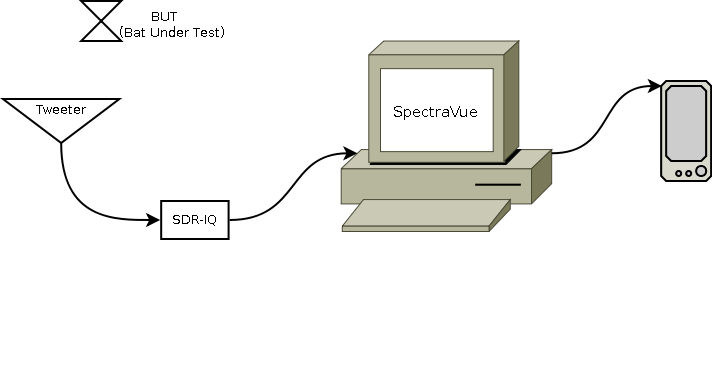
All that was left was to wait for the sun to set and the fun to begin. Below is an "early bird" bat getting out before it had gotten very dark. Note the faint blips between 20 and 35KHz as he(she) did a little echo sounding above the roof.
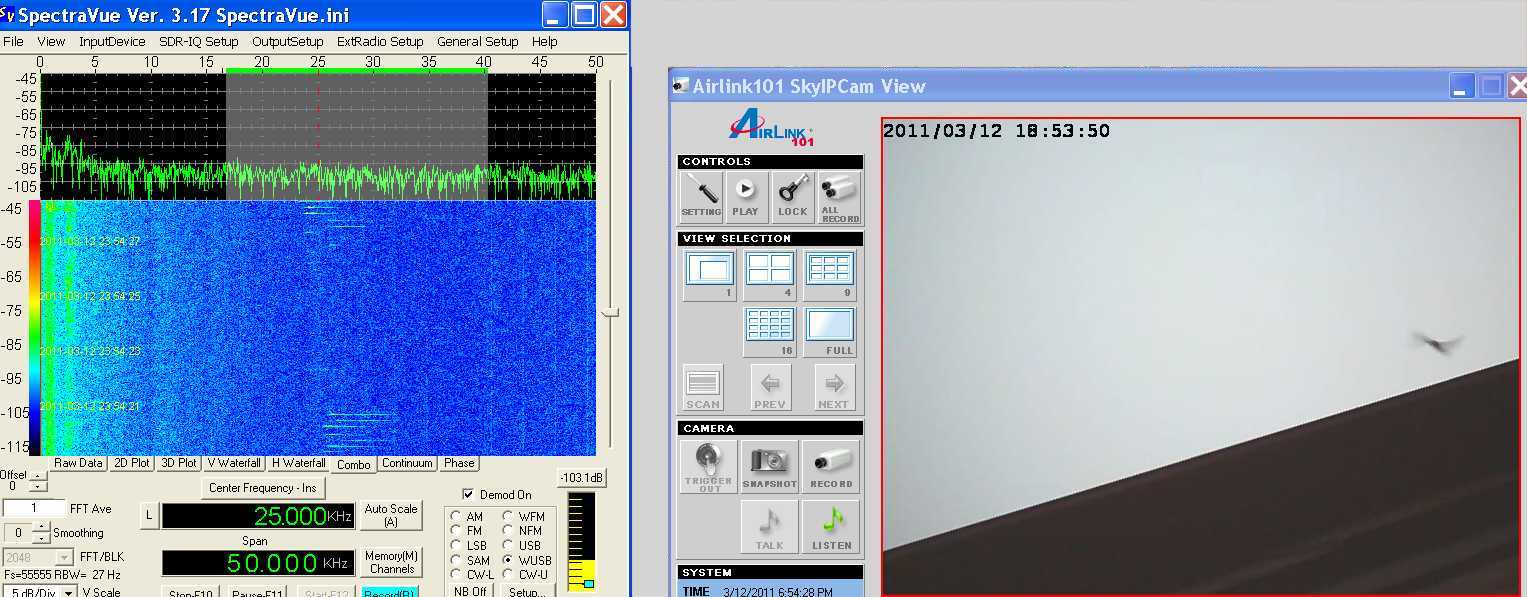
It turned out the web cam with the IR lens was not all that useful to capture their flights as they move very fast and the camera frame rate is slow. The IR doesn't illuminate them very well I guess since they are dark and probably don't reflect well.
To maximize the gain of the SDR-IQ, the variable gain setting was used and set to maximum for best S/N performance. Since there was no "atmospheric" noise, the noise floor is the preamp noise floor and the best noise figure is when it is run at maximum gain.
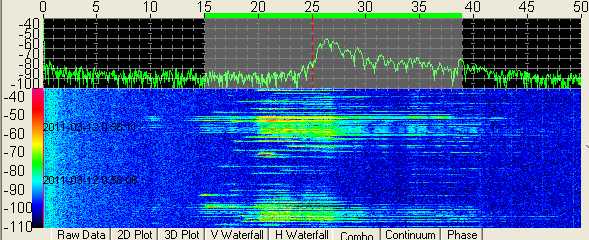
Bat Audio Recording( MP3 of frequency shifted Bat calls)
Here is a SpectraVue raw I/Q .wav file of the entire 0 to 50KHz spectrum. The noise in the audio range of 0 to 20KHz is from a heat pump close to the audio transducer.
I/Q Baseband Recording (20MByte .zip file)
The following are time domain plots of the frequency shifted audio at various time zoom settings. The frequency chirp modulation can be seen when zoomed in sweeping from high to low. The amplitude variation is probably due to the motion of the source. The smaller blips could be echos off the neighbors wall or from other more distant bats. In general the waveforms are quite complex with apparent phase, frequency, and amplitude variation.



Observations:
-
The activity seems to come in bursts. Perhaps they hunt in groups and so leave and return in groups. Long periods would pass with little activity when I assume they were out hunting around a nearby lake and woods.
-
The chip signals are not all the same. There seem to be wideband chirp signals as well as less often short bursts over a narrow frequency range. Also the "center frequency" seems to vary. This could be just from lack of crystal control or maybe the age/size of the bat determines its natural frequency range. Other literature suggest that bats can vary their chirp frequency to eliminate ambiguities in target echos or perhaps for QRM avoidance with nearby brothers.
-
My assumption is these are Myotis lucifugus or little brown bats but I'm not so sure. These bats seem to have a lower frequency than the spec sheet says for the brown bats. The brown bat is supposed to sweep from 80 down to 40KHz. What I record is more like 40 to 15KHz. Its possible the tweeter frequency response drops off sharply above 40KHz and I'm not seeing the entire sweep or these are a different type bat.
-
SpectraVue has too large an FFT to display the very fast chirp signal and it just shows up as a smear.
Good link to Brown Bat Data sheet
Lots of interesting Bat info on the web from amateur detection to home brew detectors to military research projects trying to figure out how these things work so much better than our primative sonar systems.
Even though they are ugly little disease carrying beasts, their sound processing system is top notch and still unequaled after millions of years. (Except for perhaps the Tiger Moth which has developed a bat sonar jamming system)
EPILOGUE: After about a week, the interesting guests left for unknown reasons. While they were away, their temporary home was sealed off never to be inhabited again. I suspect they and their kind are still "in the hood" so perhaps later this summer an attempt will be made to record them feeding around a nearby lake.